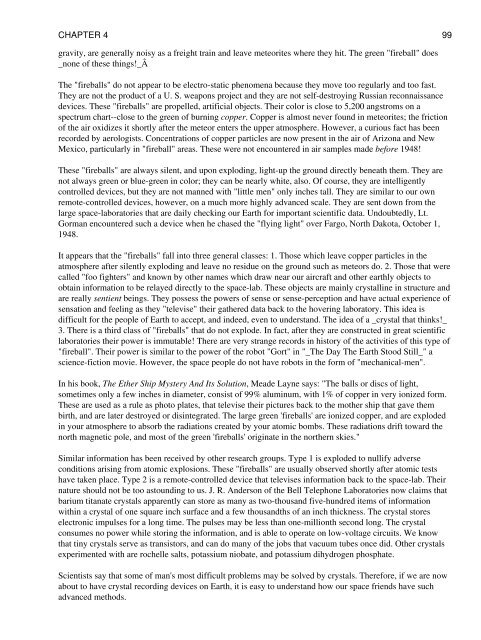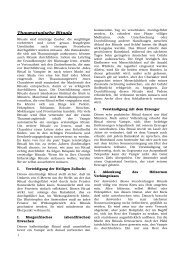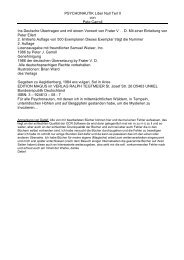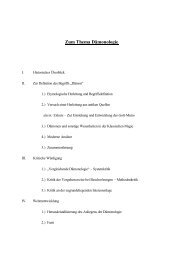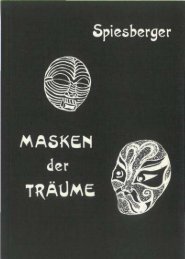CHAPTER 2 CHAPTER 3 CHAPTER 1 CHAPTER 2 CHAPTER 3 ...
CHAPTER 2 CHAPTER 3 CHAPTER 1 CHAPTER 2 CHAPTER 3 ...
CHAPTER 2 CHAPTER 3 CHAPTER 1 CHAPTER 2 CHAPTER 3 ...
You also want an ePaper? Increase the reach of your titles
YUMPU automatically turns print PDFs into web optimized ePapers that Google loves.
<strong>CHAPTER</strong> 4 99<br />
gravity, are generally noisy as a freight train and leave meteorites where they hit. The green "fireball" does<br />
_none of these things!_Â<br />
The "fireballs" do not appear to be electro-static phenomena because they move too regularly and too fast.<br />
They are not the product of a U. S. weapons project and they are not self-destroying Russian reconnaissance<br />
devices. These "fireballs" are propelled, artificial objects. Their color is close to 5,200 angstroms on a<br />
spectrum chart--close to the green of burning copper. Copper is almost never found in meteorites; the friction<br />
of the air oxidizes it shortly after the meteor enters the upper atmosphere. However, a curious fact has been<br />
recorded by aerologists. Concentrations of copper particles are now present in the air of Arizona and New<br />
Mexico, particularly in "fireball" areas. These were not encountered in air samples made before 1948!<br />
These "fireballs" are always silent, and upon exploding, light-up the ground directly beneath them. They are<br />
not always green or blue-green in color; they can be nearly white, also. Of course, they are intelligently<br />
controlled devices, but they are not manned with "little men" only inches tall. They are similar to our own<br />
remote-controlled devices, however, on a much more highly advanced scale. They are sent down from the<br />
large space-laboratories that are daily checking our Earth for important scientific data. Undoubtedly, Lt.<br />
Gorman encountered such a device when he chased the "flying light" over Fargo, North Dakota, October 1,<br />
1948.<br />
It appears that the "fireballs" fall into three general classes: 1. Those which leave copper particles in the<br />
atmosphere after silently exploding and leave no residue on the ground such as meteors do. 2. Those that were<br />
called "foo fighters" and known by other names which draw near our aircraft and other earthly objects to<br />
obtain information to be relayed directly to the space-lab. These objects are mainly crystalline in structure and<br />
are really sentient beings. They possess the powers of sense or sense-perception and have actual experience of<br />
sensation and feeling as they "televise" their gathered data back to the hovering laboratory. This idea is<br />
difficult for the people of Earth to accept, and indeed, even to understand. The idea of a _crystal that thinks!_<br />
3. There is a third class of "fireballs" that do not explode. In fact, after they are constructed in great scientific<br />
laboratories their power is immutable! There are very strange records in history of the activities of this type of<br />
"fireball". Their power is similar to the power of the robot "Gort" in "_The Day The Earth Stood Still_" a<br />
science-fiction movie. However, the space people do not have robots in the form of "mechanical-men".<br />
In his book, The Ether Ship Mystery And Its Solution, Meade Layne says: "The balls or discs of light,<br />
sometimes only a few inches in diameter, consist of 99% aluminum, with 1% of copper in very ionized form.<br />
These are used as a rule as photo plates, that televise their pictures back to the mother ship that gave them<br />
birth, and are later destroyed or disintegrated. The large green 'fireballs' are ionized copper, and are exploded<br />
in your atmosphere to absorb the radiations created by your atomic bombs. These radiations drift toward the<br />
north magnetic pole, and most of the green 'fireballs' originate in the northern skies."<br />
Similar information has been received by other research groups. Type 1 is exploded to nullify adverse<br />
conditions arising from atomic explosions. These "fireballs" are usually observed shortly after atomic tests<br />
have taken place. Type 2 is a remote-controlled device that televises information back to the space-lab. Their<br />
nature should not be too astounding to us. J. R. Anderson of the Bell Telephone Laboratories now claims that<br />
barium titanate crystals apparently can store as many as two-thousand five-hundred items of information<br />
within a crystal of one square inch surface and a few thousandths of an inch thickness. The crystal stores<br />
electronic impulses for a long time. The pulses may be less than one-millionth second long. The crystal<br />
consumes no power while storing the information, and is able to operate on low-voltage circuits. We know<br />
that tiny crystals serve as transistors, and can do many of the jobs that vacuum tubes once did. Other crystals<br />
experimented with are rochelle salts, potassium niobate, and potassium dihydrogen phosphate.<br />
Scientists say that some of man's most difficult problems may be solved by crystals. Therefore, if we are now<br />
about to have crystal recording devices on Earth, it is easy to understand how our space friends have such<br />
advanced methods.


